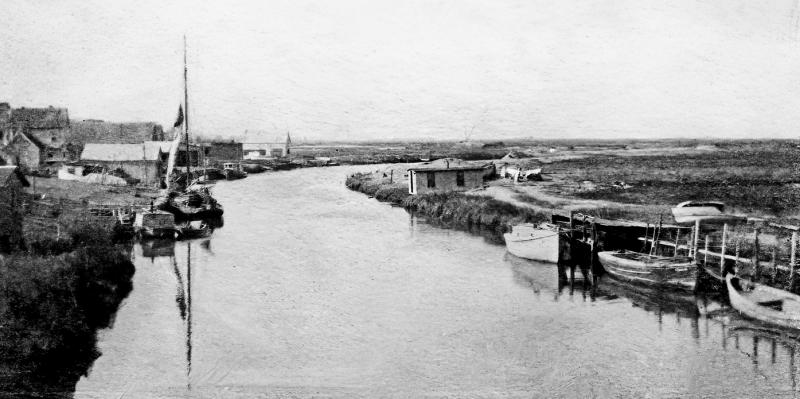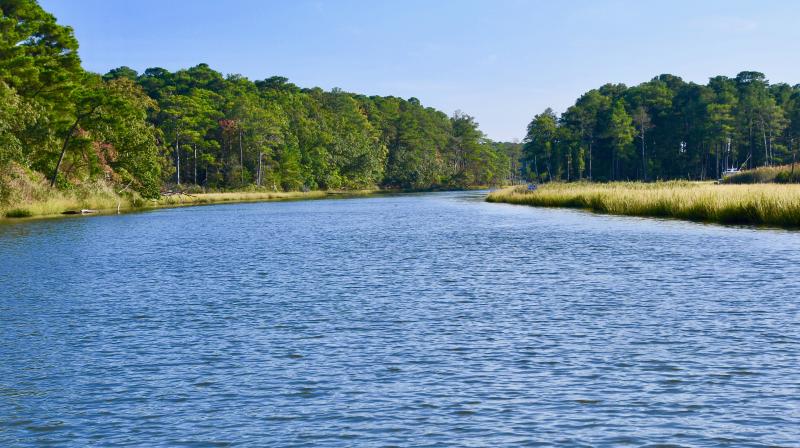Lewes-Rehoboth Canal nears century mark
There hasn't always been a Lewes-Rehoboth Canal. For most of the area's history, Lewes Creek was the waterway.
Although a canal linking Delaware Bay via Roosevelt Inlet from the Broadkill River to Rehoboth Bay was first discussed and authorized in 1803 by the Delaware Legislature, delays in funding and government red tape held the project up until 1866, when the first two miles were dug from Rehoboth Bay to Rehoboth. It was then that U.S. Congress stepped in, at the request of Delaware legislators, to provide funding to the U.S. Army Corps of Engineers.
It would take nearly another 50 years before work would resume, when Congress authorized funding in 1912 to finish the 10-mile-long canal. Work began again in 1913, and it was open for boat passage in 1916. More work remained, however, and the entire project was finished in 1918.
Although there was a waterway outlet to Delaware Bay, the improved Roosevelt Inlet officially opened in May 1937.
The idea behind the canal, which at the time was considered a marvel of engineering, was to provide area farmers with fast and easy shipping access for their produce to large cities like Philadelphia and Baltimore.
However, the U.S. Army Corps' timing was bad because by the time the canal opened, railroads and highways had become the chief ways to transport goods.
The digging of the canal was mostly done by huge steam shovels working in sometimes-precarious situations using temporary railroad tracks placed along the banks of the canal. The spoils were piled up along the banks. The canal was to be 50 feet wide and 6 feet deep (it's now supposed to be at least 10 feet deep).
The Army Corps of Engineers purchased the land needed for the canal and awarded contracts to dredging companies from Philadelphia and Mobile, Ala.
The overall cost of the canal – including drawbridges in Lewes and Rehoboth – was just over $257,000, which is more than $9 million in today's dollars.
Remember, the reason funds were allocated was to provide a fast shipping route for area farmers. Its first year of operation was its banner year, but within a decade, the canal was not viable for shipping cargo.
In that first year, shipping cargo was valued at an amazing $450,000 and included fish, coal, oysters, timber, flour, canned goods, fruit, corn and wheat.
The role played by the canal today is not one that those early canal builders could imagine. Now the canal is important to the tourism industry in the Cape Region, particularly in Lewes. It's a favorite location for recreational boating, kayaking and fishing. And the pace is slow to enjoy what the canal has to offer, with most of it in a no-wake zone for boats.
In Lewes, the canal has become one of the focal points of the city's maritime history. Along its banks are Canalfront Park, the historic Lightship Overfalls, 1812 Park, restaurants, marinas and hundreds of docks with boat slips. There are also fishing charters, including the large Parsons’ tour and fishing boats, and bait and tackle shops.
And Second Street is only a block away from the canal.
Part of the intracoastal waterway along the East Coast, the canal is an important economic engine for Lewes and the businesses that depend on it.
How many Little League programs in the country have their fields adjacent to a canal? Lewes does.
Cape Water Tours helps people get a better understanding of the canal during its two-hour tours.
There are miles of undeveloped areas on the canal between Lewes and Rehoboth where several osprey families make their home. It's not unusual to see great blue herons fishing along the banks, and to see bald eagles and egrets flying overhead.
One less bridge
There were actually three bridges across the canal. The third, a swing bridge located near what is now the Freeman Highway bridge, was built by the Pennsylvania Railroad in 1916, the same time as canal dredging was underway.
The railroad provided service to the menhaden fish factories along the Delaware Bay coastline and was the major reason the U.S. military chose the area at the end of the tracks to become Fort Miles, which protected the entrance to Delaware Bay during World War II. A railroad was needed to ship supplies and the heavy artillery used at the base.
In 2017, DelDOT and the Army Corps determined the bridge was unsafe because of deterioration of its supports. DelDOT determined the cost of repairs was too prohibitive and the fate of the bridge was either to be scrapped or moved to another location.
Thanks to efforts of the Lewes Junction Railroad and Bridge Association, DelDOT and City of Lewes, the bridge was removed from the canal in February 2022 and moved to a new home at the end of American Legion Road in Lewes.
Also in recent times, in early 2018, the City of Rehoboth Beach constructed a canal access dock behind the Rehoboth Beach Museum near the canal bridge.
Several new docking areas have been constructed on opposite ends of the canal, proving that business is good along the Lewes-Rehoboth Canal.
























































